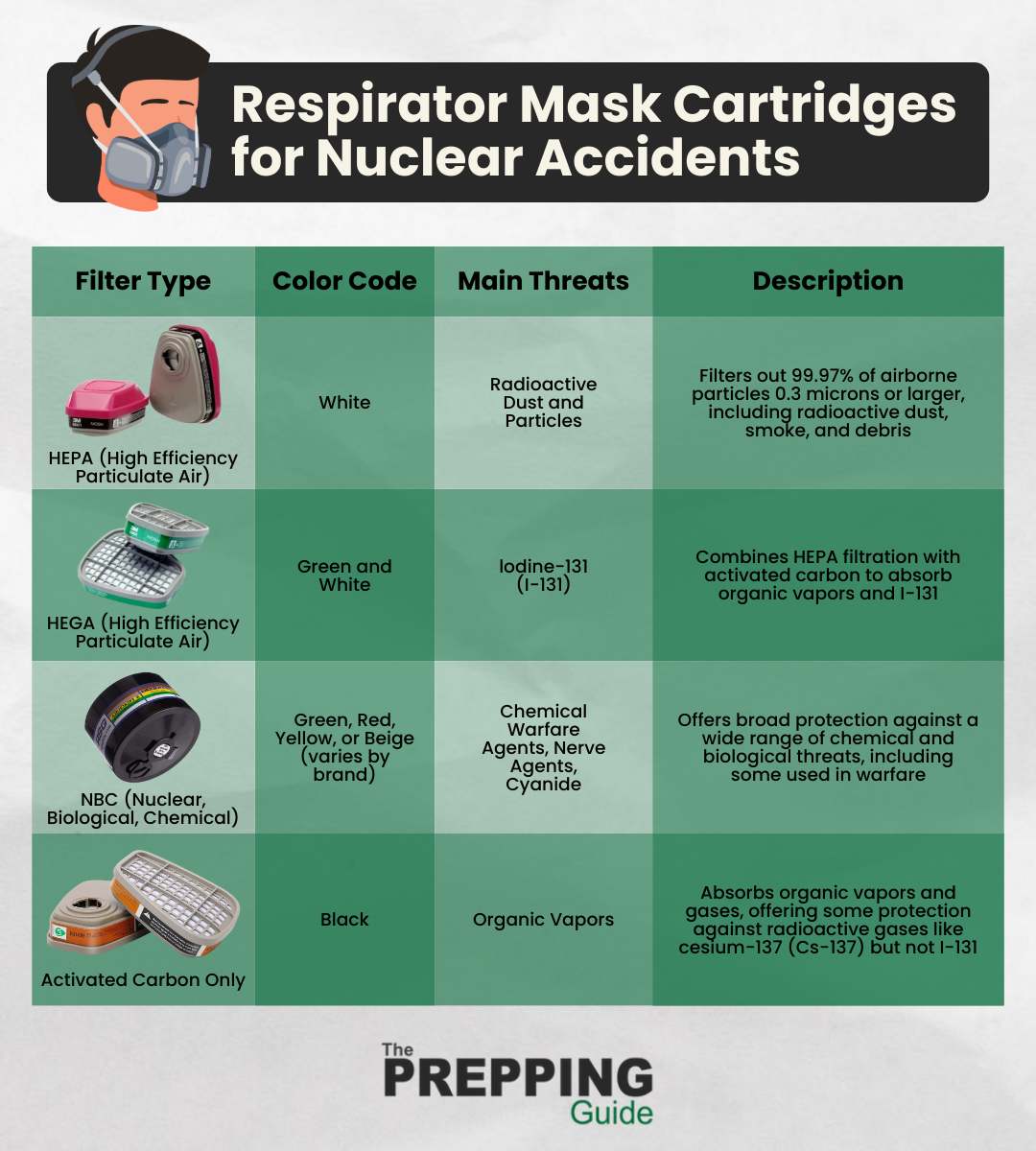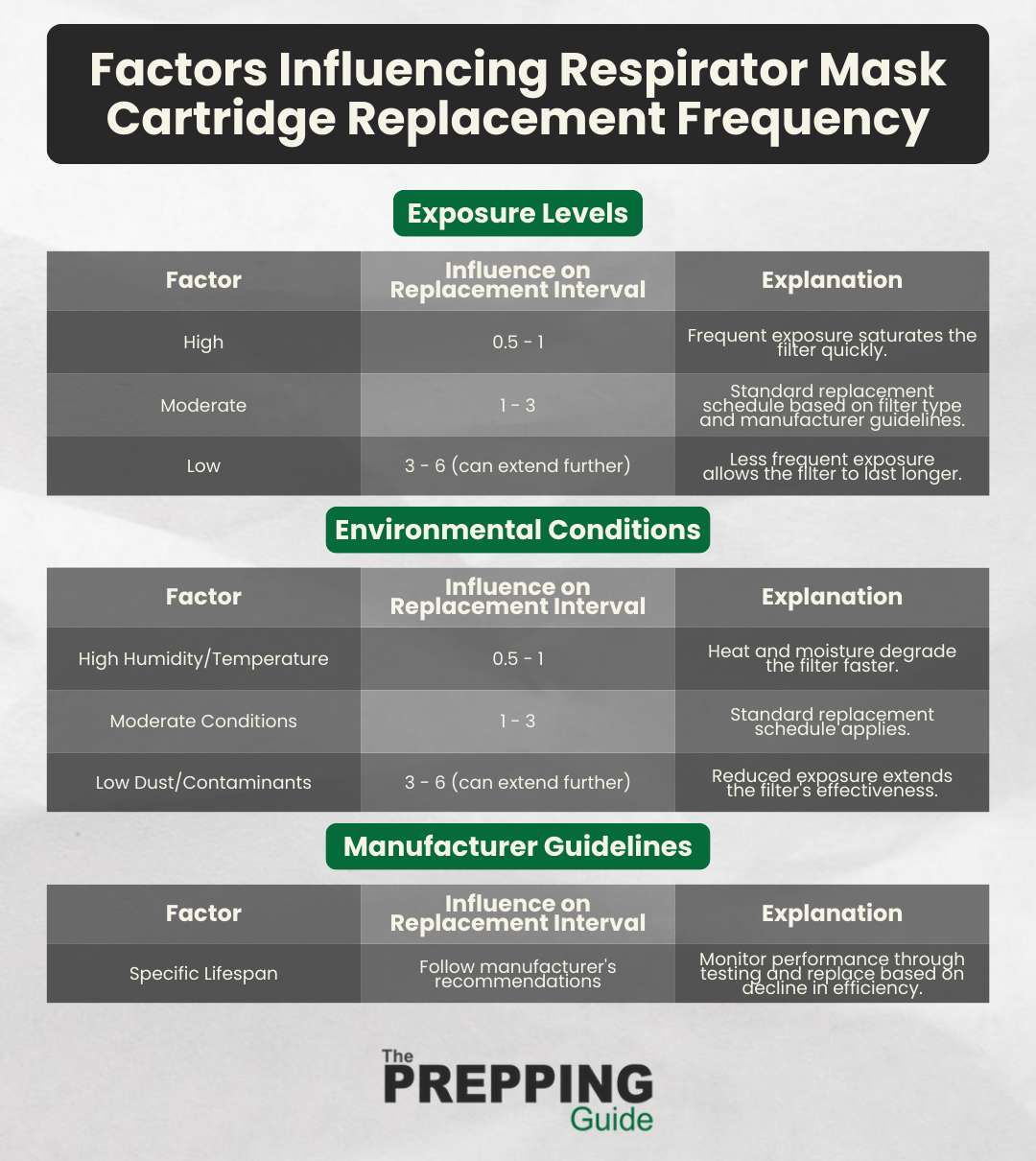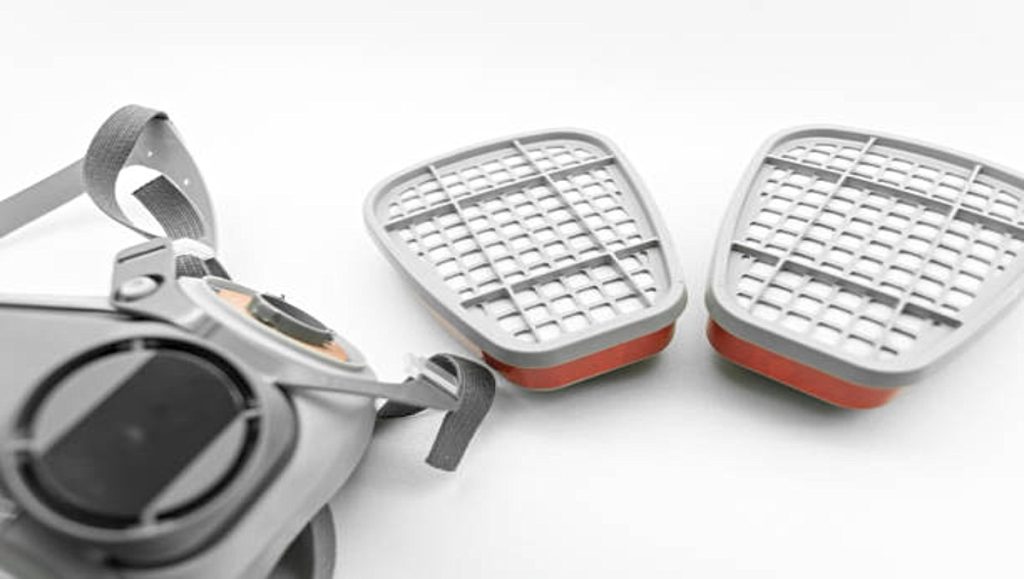
The Role of Cartridges in Nuclear Respirator Masks
The reliability of your respiratory protection is of utmost importance in the realm of nuclear safety. The effectiveness of a respirator mask hinges on its cartridges, which are responsible for filtering out potentially hazardous particles. But how often should you replace your respirator mask cartridges for nuclear environments to ensure uncompromised safety?
The frequency of replacing respirator mask cartridges for nuclear environments depends on the specific contaminants, concentration levels, and the manufacturer's recommendations. In general, it is advisable to replace cartridges every 1-3 months for frequent users or in high exposure conditions.
This article will delve into the intricate details of respiratory protection during a nuclear catastrophe. We will also explore factors influencing cartridge replacement frequency and equip you with essential inspection practices.
Factors Influencing How Often You Should Replace Respirator Mask Cartridges
When determining how often you should replace your respirator mask cartridges for nuclear environments, there are several key factors to consider.
1. Exposure Levels
Although exposure levels may vary, regularly replacing your respirator mask cartridges for nuclear situations is essential. Safety precautions should always be a top priority when dealing with potential health risks and exposure limits in nuclear environments.
Protective equipment, such as respirator masks, is crucial in minimizing radiation effects on the body. By replacing your cartridges regularly, you ensure that the mask effectively filters harmful radioactive particles.

Exposure to high levels of radiation can have severe consequences on your health, including an increased risk of cancer and other long-term illnesses. Therefore, following recommended guidelines for cartridge replacement frequency is essential to provide optimal protection during nuclear events.
2. Environmental Conditions
The environmental conditions in nuclear situations can be so extreme that they strain the effectiveness of protective equipment. It is crucial to ensure a proper fit for your respirator mask cartridges to maximize their performance and protect yourself from potential health risks.
Temperature, humidity, and radiation levels can significantly impact the functionality of the cartridges, making regular maintenance and cleaning essential. Extreme temperatures can cause material degradation, compromising the cartridges' filtration capabilities. High humidity levels may lead to moisture buildup inside the cartridges, reducing efficiency.
Additionally, radiation exposure can deteriorate the cartridge's filtering ability over time. To choose the correct cartridge for your specific needs, consider factors such as filtration efficiency, gas or vapor protection capability, and compatibility with your mask model.
Regularly inspecting and replacing worn-out or damaged cartridges is crucial for optimal protection against nuclear hazards.
3. Manufacturer Guidelines
Following manufacturer guidelines is essential for maximizing the effectiveness of your respirator mask cartridges and ensuring optimal protection against extreme environmental conditions in nuclear situations.

Manufacturers play a crucial role in determining the recommended replacement frequency of your cartridges. This frequency may vary depending on factors such as the intensity of usage and the specific cartridge lifespan factors identified by the manufacturer.
The recommended replacement frequency typically considers the expected deterioration of cartridge materials over time and any potential degradation caused by exposure to nuclear contaminants. By adhering to these guidelines, you can ensure that your respirator mask cartridges are always in peak condition and provide reliable protection when needed.
However, it is essential to note that manufacturers' recommendations are just a starting point. Users are also responsible for assessing their circumstances and adjusting replacement schedules accordingly.
Important Regular Inspection Practices
When conducting regular inspections of your respirator mask cartridges for nuclear use, there are two essential practices to follow: visual inspection and functional testing. These standard inspection practices are crucial in maintaining the effectiveness and safety of your respirator mask cartridges in nuclear environments.
Visual Inspection
To inspect your cartridge, check for any signs of clogging, which can significantly affect the filter efficiency. Look for dirt, debris, or discoloration indicating a blocked cartridge.
Additionally, check the expiration date on the cartridges to ensure they are still within their recommended lifespan. It is crucial to replace them before they expire to maintain optimum protection.

Regular maintenance is also essential to prolong the cartridge's lifespan. Keep them clean and dry when unused, and store them in a cool place away from direct sunlight or extreme temperatures. These simple maintenance tips will help you stay safe and ensure your respirator mask cartridges are always ready for action.
Functional Testing
Functional testing is a crucial—————————————————————————————————————————————————————————————–
By: kiezelamquiz
Title: How Often Should You Replace Your Respirator Mask Cartridges For Nuclear?
Sourced From: thepreppingguide.com/how-often-should-you-replace-your-respirator-mask-cartridges-for-nuclear/
Published Date: Mon, 29 Jan 2024 14:15:54 +0000

